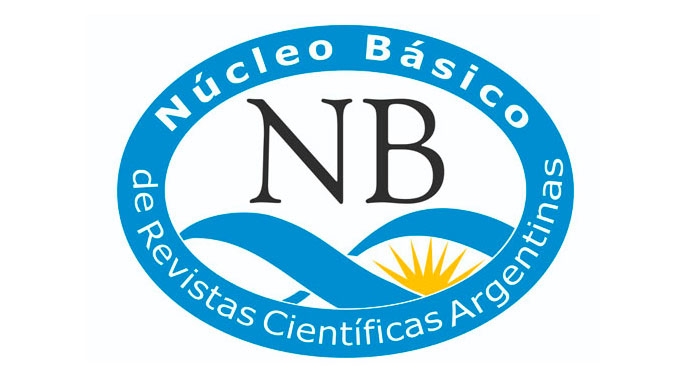Submissions
Submission Preparation Checklist
As part of the submission process, authors are required to check off their submission's compliance with all of the following items, and submissions may be returned to authors that do not adhere to these guidelines.- The submission has not been previously published, nor is it before another journal for consideration (or an explanation has been provided in Comments to the Editor).
- The submission file (manuscript) is in OpenOffice, Microsoft Word, or Adobe Acrobat (PDF).
- Where available, URLs for the references have been provided.
- The page size is A4, with 2 cm margins, except for the bottom margin, which is 2.5 cm. The font size is 11 points; the line spacing is double, and each line is numbered in the left margin. Italics are used instead of underlining, and illustrations, figures, and tables are placed within the relevant sections of the text, not at the end of the document.
- The text adheres to the style and bibliographic requirements outlined in the Directrices del autor/a Author Guidelines, available in the "About the Journal" section.
- A cover page with the title of the work, authors and affiliations is included in a separate file.
- The manuscript does not contain the names of the authors or their affiliations either in the body of the text or in the file properties.
- The Resumen and Abstract are limited to 300 words and do not contain citations or equations.
Scientific work
Complete works that present scientific research findings and make an original contribution to general, regional, or international knowledge. These articles aim to discuss a hypothesis or provide a novel theoretical and/or practical insight into the topic. Including at least one example with real data to illustrate the proposed technology or concept is highly recommended, though not strictly required. Articles should be structured coherently, with an introduction, methodology, results, discussion, and conclusions, to ensure clarity and scientific rigor.
communications
Concise communications that present preliminary results, novel observations, or specific advances in a study area. These articles allow authors to share relevant, shorter contributions that may not require the full development of a traditional scientific article. Short notes should focus on a specific topic, be clear and direct, and may include results that serve as a basis for future studies or immediate practical applications. Although shorter in length, they must meet the same standards of scientific rigor and quality as full articles.
Reviews
Articles that provide a comprehensive and critical evaluation of the existing scientific literature within a specific area of knowledge. These works analyze and synthesize previous findings, identify trends and research gaps, and propose future directions, offering an updated and contextualized perspective on the topic. Reviews are aimed at researchers and professionals seeking an in-depth understanding of the state of the art in a discipline, presenting a rigorous and well-supported analysis that fosters knowledge advancement and guides the development of new research.
Didactic articles
Articles aimed at teaching and clarifying concepts, methods, or technologies in specific areas of knowledge. These works provide detailed explanations, practical examples, and pedagogical strategies that facilitate learning and the application of complex topics. Targeted at both undergraduate/graduate students and professionals, these articles seek to inspire ideas and support the development of technical and conceptual skills in an accessible and structured manner.
Reports
History and Commemorations
Dissemination articles that document the trajectories and milestones of scientific and academic institutions, laboratories, research centers, and key figures in their respective fields. This section aims to preserve and highlight the legacy and significant contributions of these entities to scientific knowledge, commemorating anniversaries and notable events in their development.
Plenary talks
Plenaries and invited lectures at AAGG meetings.
Copyright Notice
Starting in 2022 (Vol. 43 number 2) articles will be published in the journal under a Creative Commons Attribution-NonCommercial-ShareAlike 4.0 International license (CC BY-NC-SA 4.0)
According to these terms, the material can be shared (copied and redistributed in any medium or format) and adapted (remixed, transformed and created from the material another work), provided that a) the authorship and the original source of its publication (journal and URL of the work), b) is not used for commercial purposes and c) the same license terms are maintained.
Prior to this date the articles were published in the journal under a Creative Commons Attribution license (CC BY)
In both cases, the acceptance of the originals by the journal implies the non-exclusive assignment of the economic rights of the authors in favor of the editor, who allows reuse, after editing (postprint), under the license that corresponds according to the edition.
Such assignment means, on the one hand, that after its publication (postprint) in the GEOACTA Magazine of the Association of Geophysicists and Geodesists, the authors can publish their work in any language, medium and format (in such cases, it is requested that it be recorded that the material was originally published in this journal); on the other, the authorization of the authors for the work to be harvested by SEDICI, the institutional repository of the National University of La Plata, and to be disseminated in the databases that the editorial team considers appropriate to increase visibility. of the publication and its authors.
Likewise, the journal encourages the authors so that after their publication in the Journal of the Association of Geophysicists and Geodesists, they deposit their productions in other institutional and thematic repositories, under the principle that offering society scientific production and Unrestricted academic scholarship contributes to a greater exchange of global knowledge.
Privacy Statement
Personal data and e-mail addresses entered in this journal will be used exclusively for the purposes stated by the publication and will not be available for any other purpose or to any other person.















